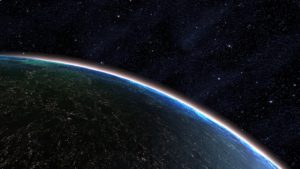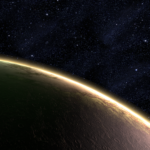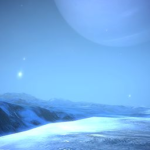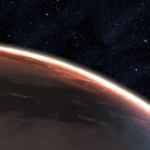System Specs:
- Stellar Mass: N/A Sol Masses
- Stellar Class: N/A
- Luminosity: N/A Sol
- Planets: 5
- Moons: 0
- Asteroid Belts: 1
- Asteroids: 1
- Objects: 0

It is probably named for Dis Pater, commonly shortened to Dis, a name that has become an alternative name for the underworld, Hades’ realm in ancient Greek mythology, hereby recalling the parent cluster’s name. It might also be named after the City of the Dead in Dante’s Inferno, which itself takes its name from the mythological Dis.
–
Planets Directory:
- Jartar
- Nearrum
- Klensal
- asteroid belt
- Gremar
- Raysha
–
Jartar:

- Orbital Distance: 1.85 AU
- Orbital Period: 2.8 Earth-years
- Keplerian Ratio: 0.808
- Radius: 1,410 km
- Day Length: 2.8 Earth-hours
- Atmospheric Pressure: 0.00 atm
- Surface Temp: 82 °C
- Surface Gravity: 0.17 g
- Mass: 0.008 Earth-masses
Jartar is a terrestrial world with a trace atmosphere of krypton and xenon. The surface is hot, and mainly composed of unremarkable silicates. Occasional deposits of aluminum, magnesium, and other light metals can be found.
Jartar is noted for the discovery of the “Leviathan of Dis,” the apparent corpse of a genetically engineered living starship. The Leviathan was found in the bottom of a crater by a batarian survey team, and estimated to be nearly a billion years old. It “disappeared” after a visit to the system by a batarian dreadnought twenty years ago.
Since then, the batarians have steadfastly denied that the Leviathan existed at all – and all the more vociferously when shown recordings of the corpse made by salarian researchers.
–
Nearrum:

- Orbital Distance: 3.15 AU
- Orbital Period: 6.3 Earth-years
- Keplerian Ratio: 0.788
- Radius: 6,779 km
- Day Length: 31.7 Earth-hours
- Atmospheric Pressure: 0.67 atm
- Surface Temp: 58 °C
- Surface Gravity: 0.82 g
- Mass: 0.919 Earth-masses
- Satellites: ≥1
Nearrum is a terrestrial world with a thin atmosphere of methane and argon. Its frozen surface is mainly composed of basaltic rock. Its most prominent feature is the Ellos Rift Valley, a long volcanic divergence zone that stretches across half of the northern hemisphere.
–
Klensal:

- Orbital Distance: 7.15 AU
- Orbital Period: 21.4 Earth-years
- Keplerian Ratio: 0.798
- Radius: 5,447 km
- Day Length: 37.2 Earth-hours
- Atmospheric Pressure: 0.58 atm
- Surface Temp: −35 °C
- Surface Gravity: 0.86 g
- Mass: 0.623 Earth-masses
- Satellites: 1
Klensal has a thin atmosphere of carbon dioxide and ethane. Its first geological surveys were performed by batarians, and suggested areas of great mineral wealth. Human mining concerns spent billions of credits hustling to the distant system and sinking test bores to claim the system for humanity.
But Klensal had only an average level of mineral wealth – valuable, but hardly worth the rush and expense. Merida Industria, a small Mexican company hoping to strike it rich in their first extrasolar mining venture, had to file for bankruptcy protection.
Investigation revealed the batarian crew had deliberately falsified their surveys, hoping it would encourage human rivals to invest in a costly boondoggle. While unethical, this was not technically illegal, and the batarian government disavowed the “personal actions of a few misguided patriots.” The planet is still littered with abandoned mining bases, which are often used as temporary meeting places for criminals.
–
Gremar:

- Orbital Distance: 10.0 AU
- Orbital Period: 35.4 Earth-years
- Keplerian Ratio: 0.798
- Radius: 3,691 km
- Day Length: 61.7 Earth-hours
- Atmospheric Pressure: 0.27 atm
- Surface Temp: −84 °C
- Surface Gravity: 0.28 g
- Mass: 0.093 Earth-masses
Gremar is an icy terrestrial world with a thin atmosphere of carbon dioxide and krypton. Its surface is mainly composed of frozen ammonia with deposits of tin and other light metals.
When exposed to sunlight, Gremar’s ammonia can melt, forming equatorial seas of the toxic chemical. This allowed a profusion of simple fungus and lichens to evolve in the low-energy environment. A by-product of their metabolism causes them to glow very faintly. While the light of an individual is insignificant, large patches seem to reinforce the light of one another, and are visible from space.
–
Raysha:

- Orbital Distance: 17.98 AU
- Orbital Period: 85.5 Earth-years
- Keplerian Ratio: 0.795
- Radius: 34,914 km
- Day Length: 11.5 Earth-hours
- Atmospheric Pressure: N/A atm
- Surface Temp: N/A °C
- Surface Gravity: N/A g
- Mass: N/A Earth-masses
- Satellites: >1
Raysha is a standard hydrogen-helium gas giant with traces of sodium and ammonia in its atmosphere.
During the brief “gold rush” to Klensal, a few companies established an infrastructural [sic] for helium-3 skimming and deuterium mining on Raysha’s icy moons. When Klensal proved to be less wealthy than expected, the facilities were stripped for parts and abandoned.
Survey Text
“Scans of the planet Raysha revealed an old unmanned shuttle. Your salvage team found turian goods on board, all marked with the Tridend Colony insignia.”
–
–
video





